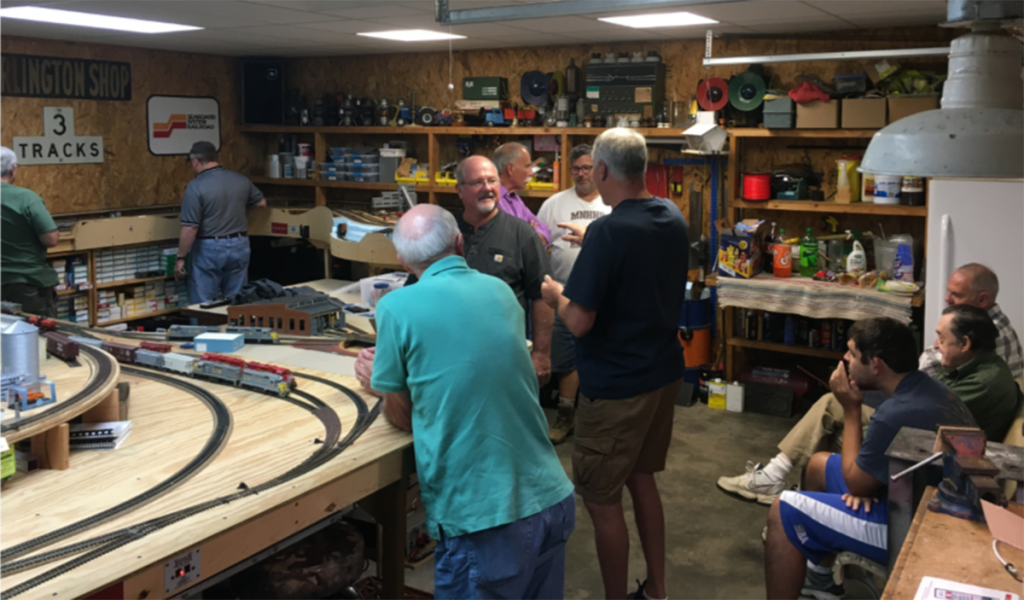
Above: The Chicago-Miami Auto-Train circa 2006 exits Baker Tunnel on Steve’s N Scale layout October 15, 2019. .
Above: “Tote Boats” on Steve’s N Scale layout – October 15, 2019.

Posts that don’t fall under other categories
Earlier this year my wife and I visited the Fordsville, Ky train depot on a rainy day. Fordsville is about 46 miles east of Madisonville in Ohio county. The depot is across the street from City Hall downtown.
The first train to Fordsville on the newly built Owensboro and Fordsville Railroad was on October 1, 1889 and regular freight and passenger service started a week later. The round trip fare was 85 cents. The Illinois Central Railroad built a branch line from Horse Branch to Fordsville in 1893. The L&N Railroad bought the lines in 1905 and the present station was built in 1916.
As many as 6 passenger trains a day went between Horse Branch and Owensboro but passenger service was cut June 15, 1941. Freight service lasted until the late 1970s.
The depot has been nicely restored and contains a modest train museum. Call 270-929-5792 for current hours of operation. There is a nice diner a block away on the main road (Hwy 54). – Rich Hane
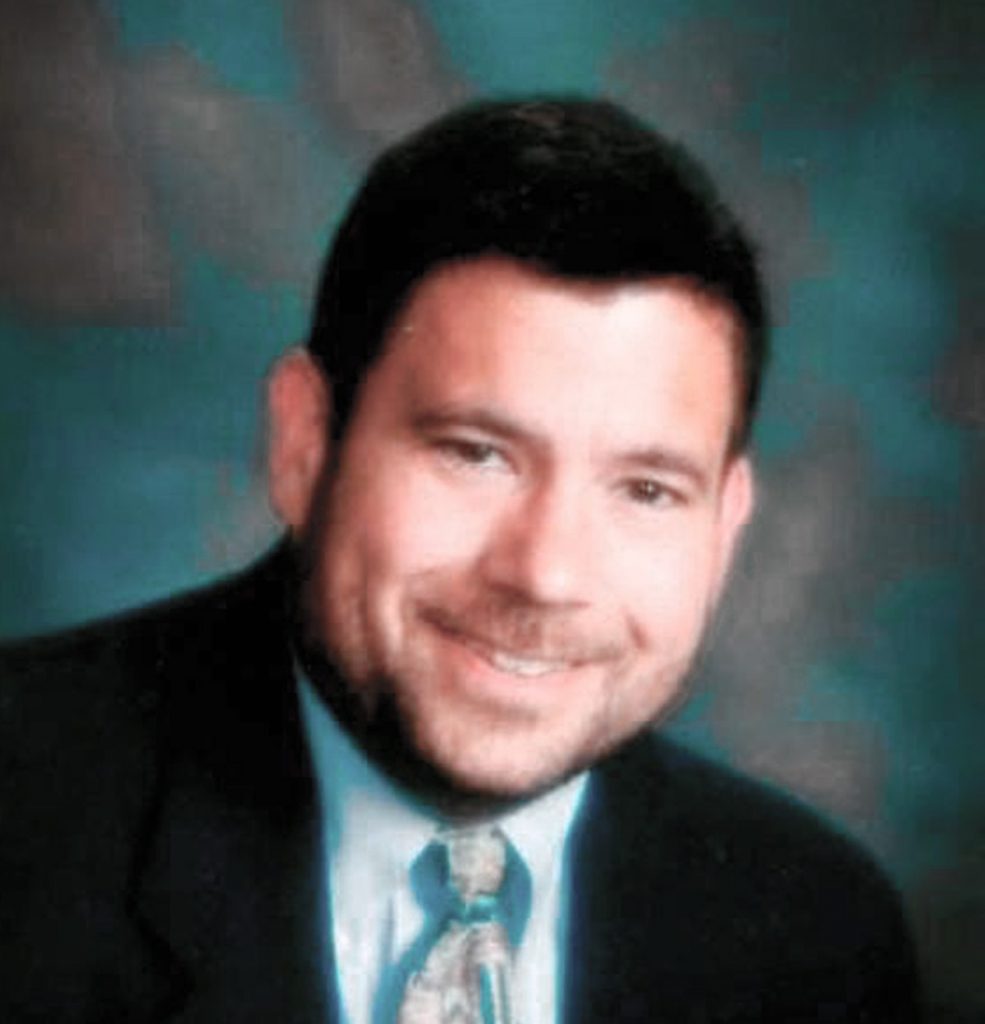
Are you a hold out for jumping into the social media circle? Afraid you’ll get unsolicited friend requests and suspicious messages from people you don’t know and may not want to know? Reluctant about getting your account hacked? Well, if you’re willing to change your password every 6 months or so you can avoid most of these demons.
The truth is, in my opinion, the advantages and benefits social media offers to rail fans and model railroads far outweigh the occasional frustrations experienced by many of us, myself included. Here are just a few examples of rail-related Facebook pages and/or groups:
Nashville Steam – a FB page dedicated to promoting the restoration of NC&StL steam locomotive 576. It is chocked full of pictures and current information about the restoration process. You can post questions and make comments on each post.
Illinois Central Railroad – A public FB page designed for former (and current it still says) employees of The Illinois Central – “A place for former and current employees of the Illinois Central Railroad to hang out and keep in touch.”
L&N Railroad Modelers – A public FB page for those modeling anything L&N.
Railroad Fools – I think the name of the public page speaks for itself. One of my favorites.
Railroad Oddball Locomotives and MOW Equipment – A closed group so you’ll have to click on the “Join Group” button and wait to be granted entrance. A unique site for unusual railroading equipment.
West Kentucky Chapter of The National Railway Historical Society – keep in touch with what your chapter mates are up to and post your own photos, comments, and ideas. Jim Pearson does a great job keeping the public page updated and looking good.
I hope these samples have encouraged you to give social media a try. If you do not have a computer, smart phone, or tablet, you can use your public library’s computers. Just ask the library staff for help.
Bill Thomas, editor
Railroads have long played a major role in the automobile industry, from the era of primitive converted wagons to today’s high-performance cars. Auto manufacturing is a key market segment for railroads, so train schedules have often been geared to production deadlines and needs. There will be at least one follow-up to this series.
The evolution of change in handling finished automobiles is seen here.
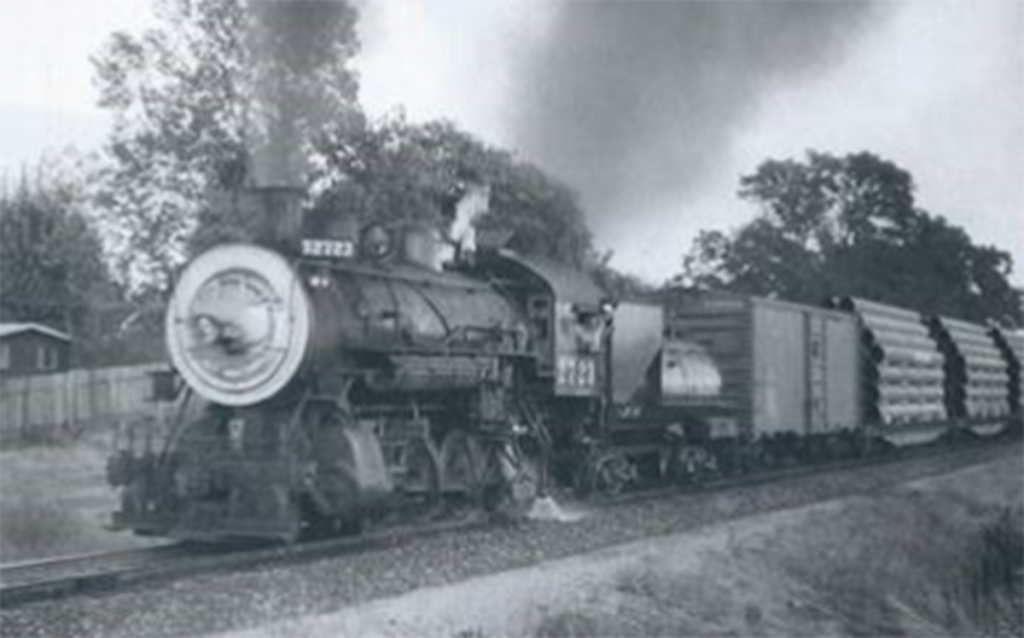
Twenty seven loads of “Big Inch” pipe from Kaiser Steel enroute to Wyoming.
So why the boxcars, fore and aft. Those empty cars are for crew protection in the event of a mishap along the way. Those heavy pipes would be like missiles in any kind of sudden stop. The buffer cars provide at least some level of personal protection.
This scene is just north of Sacramento very late in the steam era, September 1956. This Southern Pacific train will deliver the cargo to the Western Pacific at Marysville for onward shipment.
The use of buffer cars continues to this day. 100 plus car trains of crude oil, likewise lengthy trains of ethanol have buffer cars behind the power, you no longer see a caboose and the friendly wave from the crew. Buffer cars today are partially filled with sand to reduce the impact in the event of an accident.
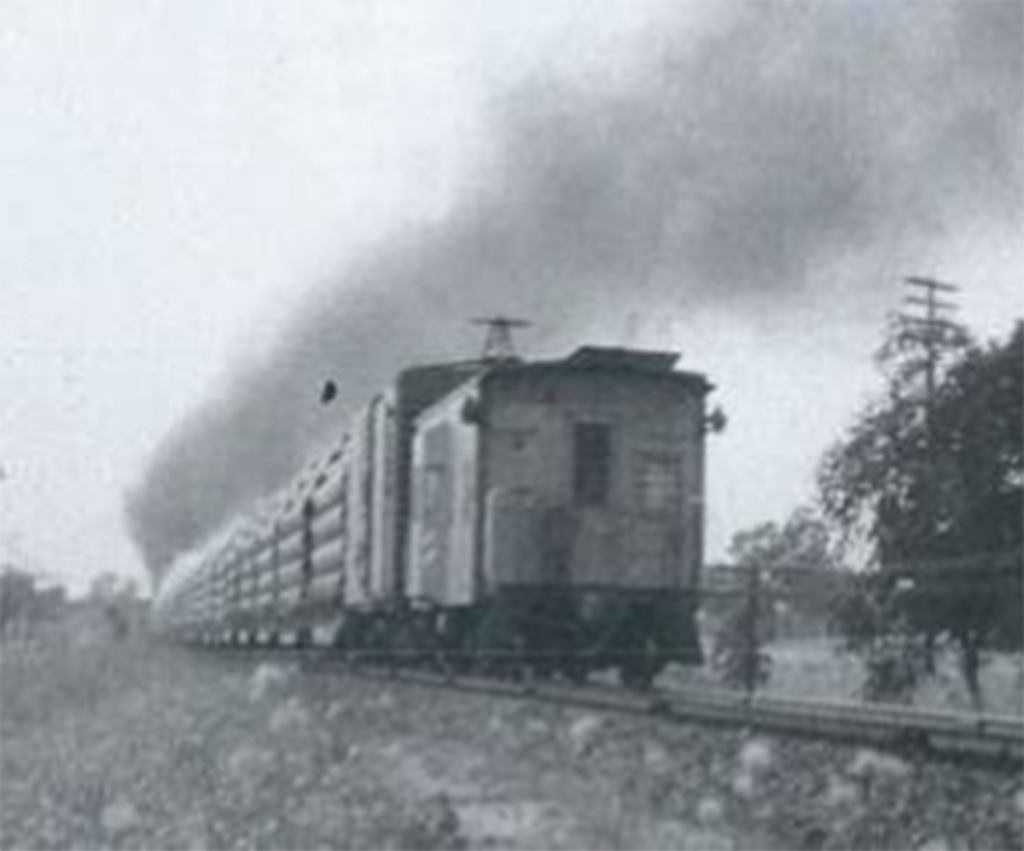
The jury is still out as to the wisdom, efficiency, even the safety of shipping crude via rail or pipeline. My take is in favor of the rails, as the infrastructure allows flexibility in sources and destinations, on an existing transportation plant. No need to tear up the countryside and abuse the environment with underground pipe. Ethanol cannot be shipped via pipeline, so we’ll always that on the rails of barges.
Credits: photos by Richard E. Lohse as seen in Classic Trains – Spring 2018 Gary O. Ostlund
Earlier this month, May 10th, marked the 150th Anniversary of the Gold Spike ceremony at Promontory, Utah. I thought it appropriate to rerun this picture story from a few years ago.


The “Thank God it’s Friday” graphic is one of several intro’s for my slide shows to groups. It’s good for a laugh, however, the 1869 meeting of the Union Pacific and the Central Pacific in Utah was somewhat similar. Rather than joining in such a slip-shod manner, they simply passed one another, and kept on going. Seems the two railroads were being reimbursed by the Government for work performed, by the mile. The joining of the rails at Promontory, about three miles around the bend in the picture, was the result of a negotiated settlement.
In the picture, you can easily see the railroad right-of-way on a fill. That is the work of the Central Pacific, charging eastward into the picture. But look closely to the left half of the picture. You can see two earthen bridgeheads with a gap in between. The distant one is easy to see, the other is in the foreground, lower left of the pix. The Union Pacific, working westward, filled the gap with a trestle, long since lost to the elements, salvage, or fire….. not sure.
If you go to Google Earth, you can see both landmarks by tracing the twin right’s-of-ways of both railroads eastward from the Gold Spike Monument site. In a little over three rail miles, or 2.8 the way the crow flies you will see clearly the filled curve, the bridgehead a little less obvious. (Hint: use the ruler in the tool bar, to gauge the distance.)
Credits: (Artwork, unk., can anyone out there ID the artist.?) Photo by Drake Hokanson as seen in TRAINS Mag June 2015
By Bill Thomas
In April 2005, Liam (age 5) is helping me set boundary stones.
I was fortunate to have Ron Johnson as a friend and neighbor. He freely loaned me his Kubota front-end loader to move dirt to the railroad area. I was careful to keep dirt away from the base of my big hickory tree. The depressed area around the tree is now covered with Vinca vines.
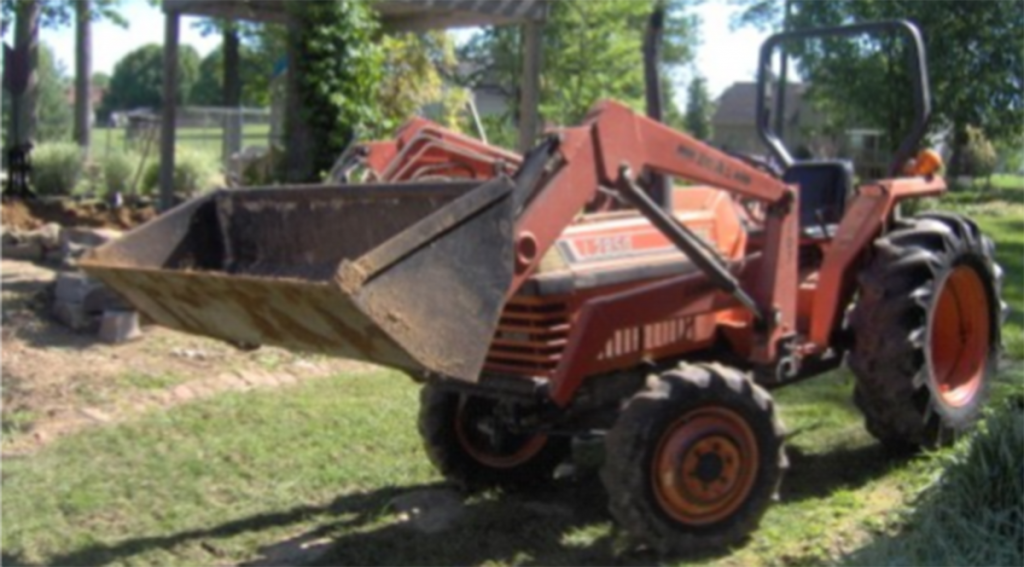
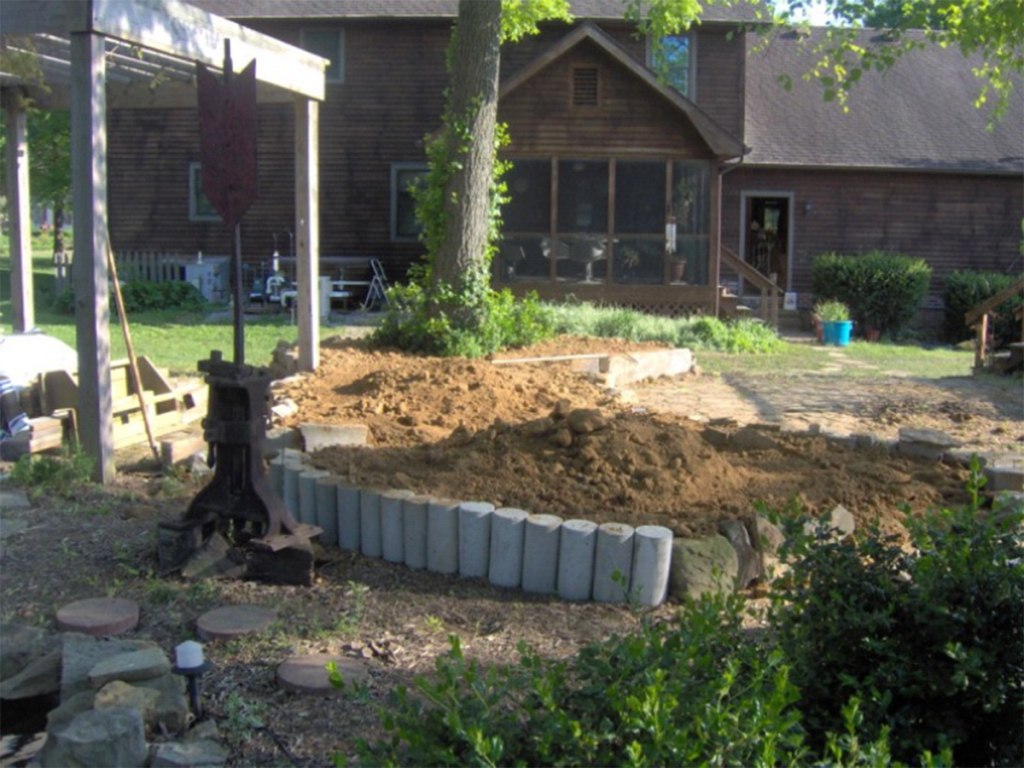
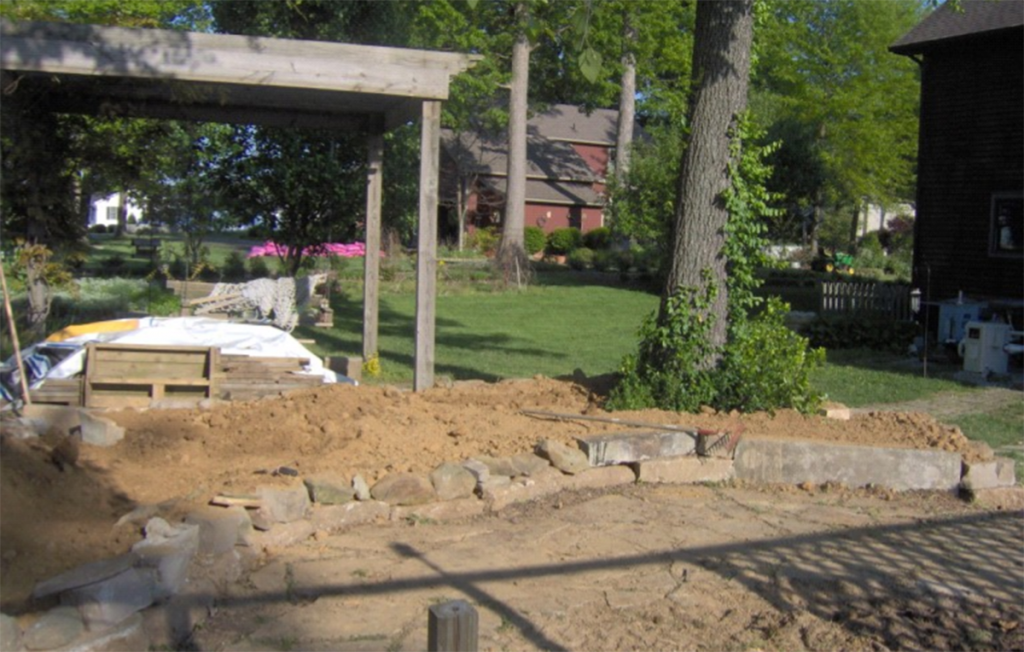
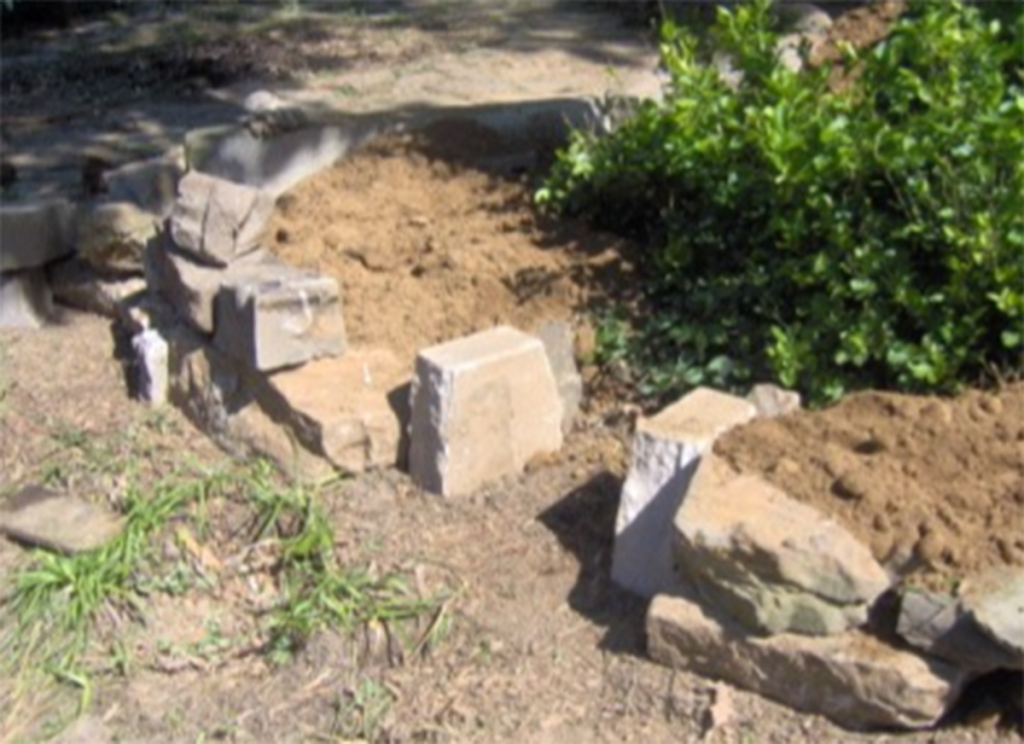
It’s been my pleasure over our 16 years here in Madisonville to share my backyard with friends, family, neighbors, and many others. – Bill

Submitted by Gary Ostlund

A few weeks ago, my picture story on the New York Central’s “Water Level Route” included the use of track pans and scooping water, and raised several questions. .
There were 19 track pans between New York City and Chicago, and ten between Buffalo and Chicago on their line through Ontario and Michigan. Other U.S. railroads using track pans were: the Pennsylvania, Jersey Central, Reading, Baltimore & Ohio, the New Haven and the Milwaukee Road. In the UK, the London & Northeastern scooped water as early as 1859. The American RR Journal labeled these devices: “Jerk Water.” The term is still in use today such as in Jerkwater Town, describing a hamlet too small to merit train stops. At one time water scooping was considered for cattle cars. By law, cattle were required to be offloaded for feed and water after 36 hours. The logistics must have doomed that concept. In the days, before air-conditioning, passengers in cars near the front of the train were wary of opening the windows.
The (New York) Central performed extensive testing finding that above 35 MPH speed had little effect on the amount of water delivered to the tender. Efficiency, the percentage of water from the track pan delivered to the tender, fell off very little between 45 and 55 MPH. However above 55 MPH efficiency dropped rapidly as the scoop sprayed water from under the tender. The recommended maximum speed was set at 50 MPH. Conductors (who are in charge of the train) and Engineers clearly paid little heed to wasted water. Schedules and timetables ruled and management looked the other way.
A special thanks to former New York Central motive-power dispatcher Jim Ferrante for technical data.
Submitted by Gary Ostlund

As railroads grew, trains got longer and heavier, the power to pull them got larger. Roundhouses with the ubiquitous turntable suddenly needed updating.
Roundhouses stalls were extended, and turntables had to be lengthened. The individual stall extensions were minor, compared to the lengthening of a turntable.
Speedy construction was essential as you can see with multiple cranes, equipment, supplies and a hefty workforce.

When a turntable was out of service for even a short period, the task of maintaining the motive power came to a standstill. Time was of essence.
The last new roundhouse complex to be built by a major railroad was the Nickel Plate facility in Calumet, IL., near Chicago in 1951. Most roundhouses are a thing of the past, as diesel maintenance required long bays, with pits and overhead cranes. Yet today you will still find many a turntable to turn and position power and certain pieces of rolling stock.
You will notice when a train passes with multiple units up front, the rearmost is almost always facing rearward. Locomotive sets usually return to their terminal of origin, thus no turning of equipment.
So one must wonder, are those remaining turntables symbolically poking their finger into the eye of management as revenge for the demise of steam….?




These photos of NC&StL 576 are taken from Nashville Steam’s Facebook page. See Nashville Steam on Facebook for credits. 576 sits beneath the shed at the Tennessee Central Museum (Nashville).
Work continues to disassemble No. 576 and prepare the locomotive’s appliances for repairs and servicing. One of the biggest tasks was to remove the front end of the smoke box for access to the boiler’s interior. Now we have a better approach to the superheaters and eventually the tubes and flues. Lots of progress!
(taken from Nashville Steam Facebook page)